We may be compensated if you purchase through links on our website. Our team is committed to delivering honest, objective, and independent reviews on home products and services.
The great thing about a freestanding adjustable-shelf bookcase is that it’s suitable for any room. You can paint it to match your decor or stain it to look like natural woodwork. Even though it gives over 10 square feet of shelf space, including the top surface, it takes up less than 3 feet of floor space.
You don’t need to be an accomplished cabinetmaker to build a bookcase. All you need are some saw and router skills and patience to be exacting with your measurements and cuts. By following This Old House general contractor Tom Silva’s expert guidance, you can put a bookshelf together just in time to clear the junk off the living room floor.
Planning Your Bookcase Project
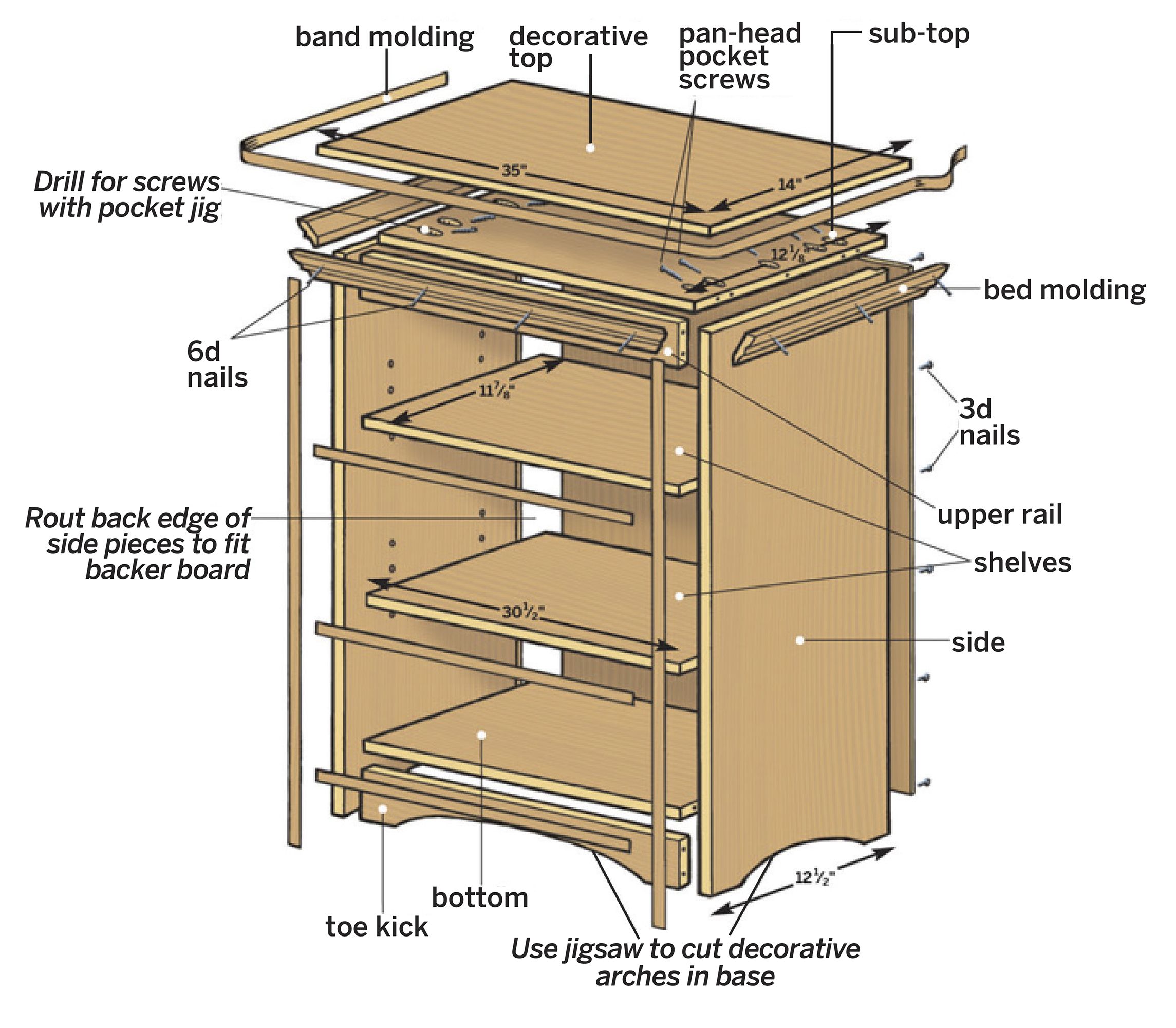
Think about both your creative preferences and needs when you’re choosing a bookshelf material. A few of the options you might consider include these:
- Plywood: Plywood is an affordable material that’s easily painted and stained. However, not all of it is high-quality. For the bookshelf in the video, Silva chose cabinet-grade birch-veneer plywood for its value and professional finish.
- Soft wood: Soft wood, particularly pine, is an excellent choice if you want an easy material to work with. You can paint or stain soft wood, but it’s more prone to scratching and denting compared to other materials.
- Hardwood plywood: If you don’t mind paying a little extra for oak or maple plywood, you can have a more durable and sleek-looking bookshelf.
- Salvaged wood: Salvaged wood and reclaimed lumber can be a good option for environmentally conscious builders. It’s also a great way to give your bookshelf a distinctive, rich historical feel.
You should also consider the types of storage you think you’ll need, thinking beyond just books. Baskets, bins, prized pictures, or even houseplants are great candidates to keep inside the shelves and cubbies.
Materials and Tools Needed
You’ll need these materials and tools to build the bookshelf in the video.
Materials
- 3/4-inch birch plywood
- 1/4-inch birch plywood (for the back)
- Iron-on birch veneer edge banding
- Pocket hole screws (1 1/4-inch)
- 3d nails
- Wood glue
- Pine bed molding
- Shelf pegs
- Paint or stain (as desired)
Tools
- Circular saw with rip fence
- Plunge router with rabbeting bit
- Jigsaw
- Drill/driver
- Pocket hole jig
- Iron
- J-roller
- Veneer trimmer
- Utility knife
- Miter saw
- Sandpaper (120-grit)
Preparing the Bookcase Components
You’ll start your bookshelf project by cutting the plywood to size and making some basic structural pieces.
Cutting the Plywood Sides
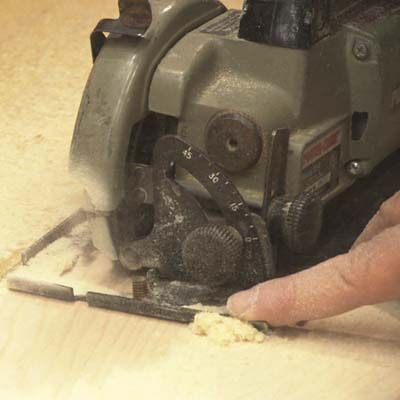
Begin by ripping a piece of 3/4-inch birch plywood into a 12 1/2-inch-wide strip with a circular saw. Silva clamps a straightedge guide to the plywood to keep the cuts accurate, though you can also use another piece of 8-foot plywood as a saw guide.
Creating the Rabbet for the Back Panel
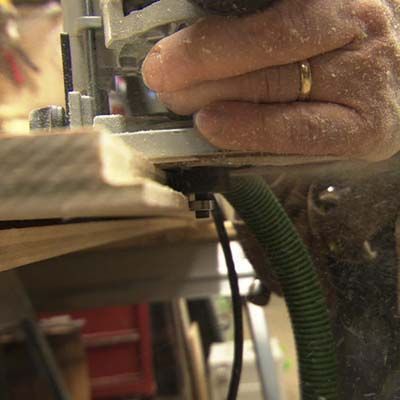
Next, create the rabbet joint where the side panels will connect to the back piece. A rabbet joint will also let you hide the edge of the back panel.
Using a router with a ball-bearing-piloted rabbeting bit, cut a 3/8 inch wide by 1/2 inch deep notch into one edge of the strip.
Cutting the Other Plywood Pieces
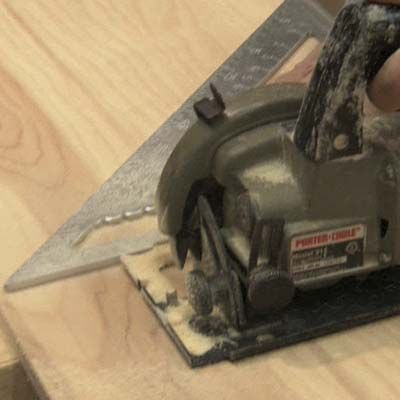
There are a few other plywood cuts to make before you can move on to the next steps. Rip a 12 1/8-inch strip from the 3/4-inch plywood to make the sub-top and bottom of the bookcase. Then, cut another strip 11 7/8 inches wide to make the shelves.
Next, cut the routed strip into two 41 3/4-inch pieces to make the sides. The other two strips get cut into 30 1/2-inch pieces to make the sub-top, bottom, and two shelves.
The narrow upper rail also gets cut from 3/4-inch plywood, measuring in at 30 1/2 inches long by 2 inches high. Eventually, it will span the front of the bookcase just below the top.
Cutting the Toe Kick and Side Arches
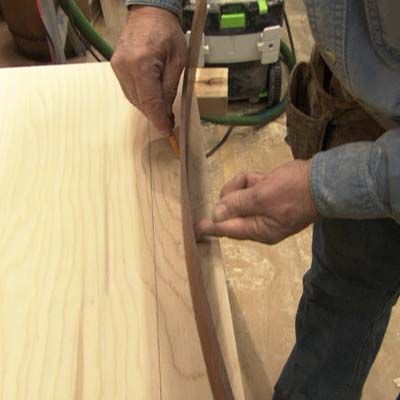
Silva adds a decorative touch with gentle curving arches cut into the front toekick and each side panel. By creating “feet,” he makes the piece appear visually lighter and less bottom heavy.
To do this yourself, cut a piece of plywood to 30 1/2 inches, keeping the “good side” down. Then, mark off a 2 1/2-inch width across the plywood, find the center of the line, and mark again 1 1/4 inches off the bottom.
Put the board over a piece of scrap wood, driving nails into the scrap wood 1 1/2 inches from each end of the toe kick. The bottom of the toe kick should butt up against the nails.
To finish planning the arch, place a strip of 1/4-inch-thick hardboard in front of the nails, pushing the center back until it meets the center mark to form the correct shape. Trace along the bent headboard and cut the arch out with the jigsaw.
Once the arch is cut, rip the toe kick to 2 1/2 inches with a circular saw.
Mark and cut arches into the two side pieces using the same method. Keep the side arches even by clamping the pieces together and cutting them at the same time.
Drilling the Shelf Holes
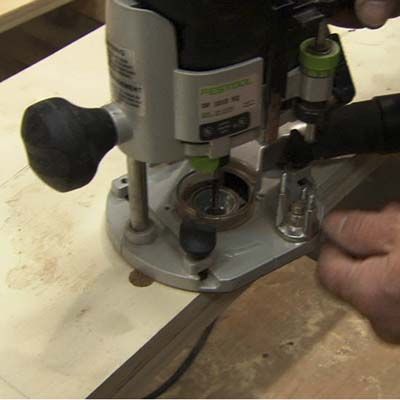
You’ll mount the shelves on metal shelf pegs. To drill for the pegs, make a hole-drilling template from 3/4-inch pine cut to the same length as the bookcase sides. Use a 5/8-inch spade bit to drill a series of equally-spaced holes in the template board.
Mark a line at the center of the template board and on each bookcase side piece. Clamp the template to the inside surface of one side piece, lining up the center lines. Outfit a plunge router with a ¼-inch straight bit and ⅝-inch-diameter collar.
Set the collar into one of the template holes, turn on the router, and plunge down to make a ¼-inch-diameter by ⅜-inch-deep hole in the side. Repeat for each template hole.
Unclamp the template, flip it over and drill mating shelf-peg holes on the opposite edge of the bookcase side. Repeat this hole-drilling process in the other side piece.
Covering the Plywood Edges
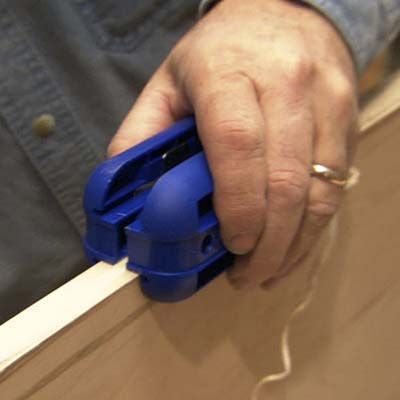
Silva uses birch veneer edge banding to eliminate sharp edges and corners in the plywood. It’s easy to set using an iron on low heat.
Immediately after putting on the edge banding, use a J-roller to press the veneer tightly to the plywood and cut it to length with a utility knife. Slice off the overhanging edge of the veneer with a veneer trimmer, and hand-sand the edges flush to the plywood with 120-grit sandpaper.
Drilling Pilot Holes
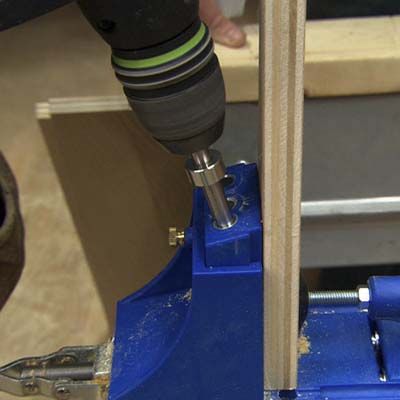
Clamp a pocket-hole jig to the backside of the toe kick. Using a drill/driver fitted with the jig kit’s special bit and depth-stop collar, make two angled pilot holes in the ends of the toe kick.
Then, drill these holes:
- 5 holes across each side of the underside of the bottom piece
- 2 holes on each end of the back of the upper rail
- 5 holes across each side of the top face of the sub-top
Assembling the Bookcase
Now that all the components are ready, it’s time to put them together to make your bookcase.
Putting Together the Frame
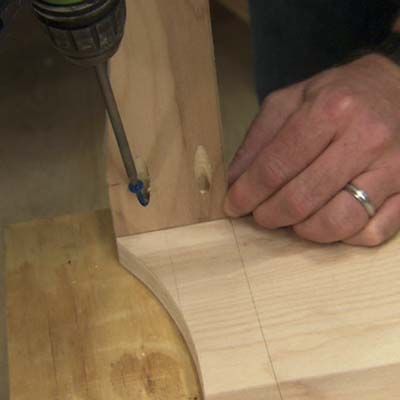
Using a drill/driver and 1¼-inch pan-head pocket screws. fasten the toe kick to one side piece, making sure the screw pockets don’t show on the front of the bookcase.
Continue the assembly, using pocket screws to fasten the bottom to the side (from underneath), the top to the side (from above), and the upper rail to the side (from the back). Make sure the top and bottom are tight against the upper rail and the toe kick. There should be a ½-inch gap at the back to match the rabbet on the side piece.
Flip over the partially assembled bookcase and attach the top, bottom and upper rail to the remaining side.
Adding the Back
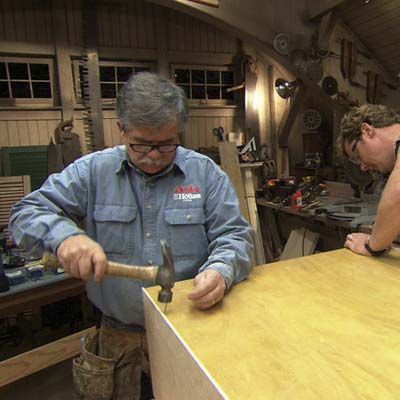
Turn the bookcase face down and lay the ¼-inch birch plywood back into the rabbet at the back of the sides. Attach the back using 3d nails.
Making the Decorative Top
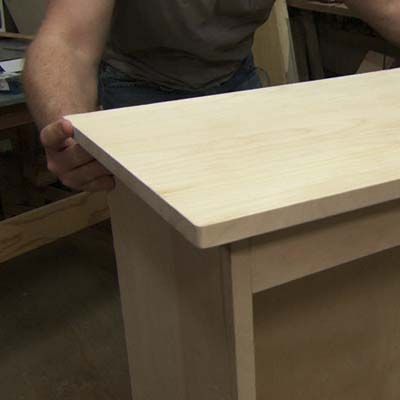
Cut a piece of ¾-inch plywood into a 35-by-14-inch rectangle. Cover the exposed front and side edges with birch iron-on veneer.
Set the finished top on the bookcase, holding the back edge flush with the rear of the bookcase; be sure it overhangs equally on each end.
Attaching the Decorative Top
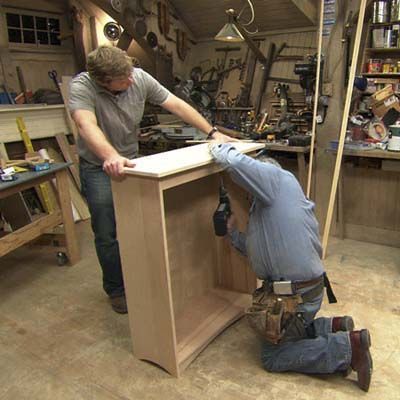
Using a drill/driver and 1¼-inch pan-head pocket screws, attach the decorative top to the sub-top from underneath.
Making the Finishing Touches
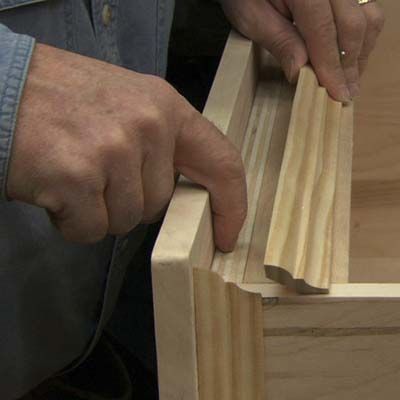
Using a miter saw set to a 45-degree angle, cut pieces of pine bed molding to fit around the front and sides of the bookcase, under the decorative top. Nail the bed molding on with 6d finish nails.
Lightly sand all surfaces with 120-grit sandpaper. Then, paint or stain the bookcase as desired.
Once all the parts are dry, install shelf pegs into the holes bored in the bookcase sides, and set the shelves into place. You’ll need four pegs to support each shelf.
Tips for Maintaining and Using Your Bookcase
Once you’ve built your small bookcase, consider these tips to keep it looking its best and ensure it remains functional:
- Don’t place overly heavy items on the adjustable shelves to prevent sagging.
- Keep your books upright, well-organized, and pristinely flat with bookends.
- If you decide to stain your bookcase, use a protective finish to keep the wood looking fresh.
